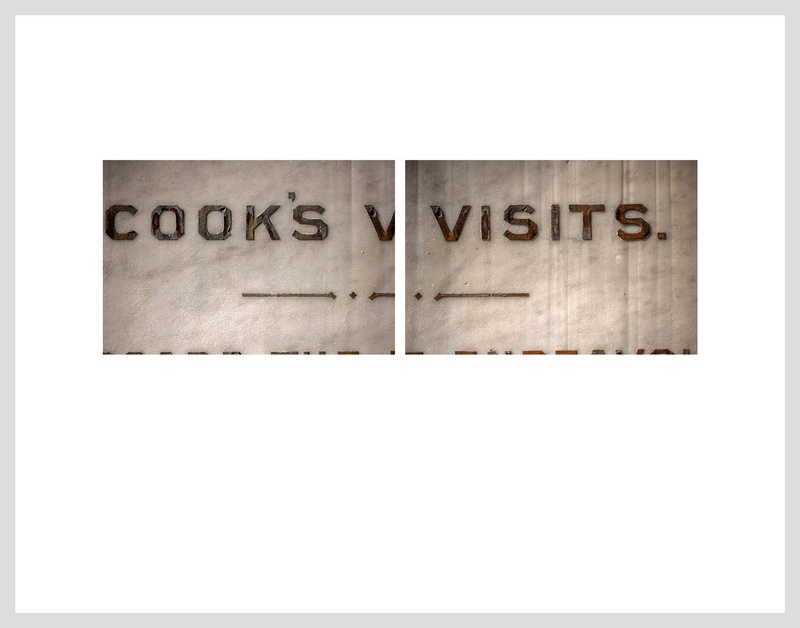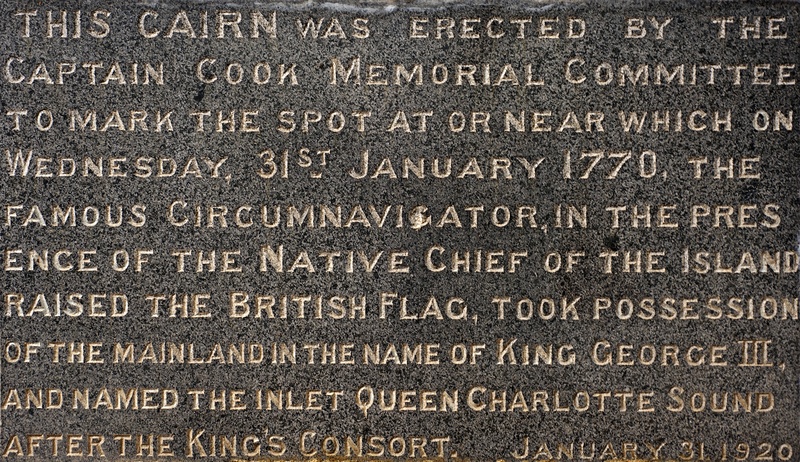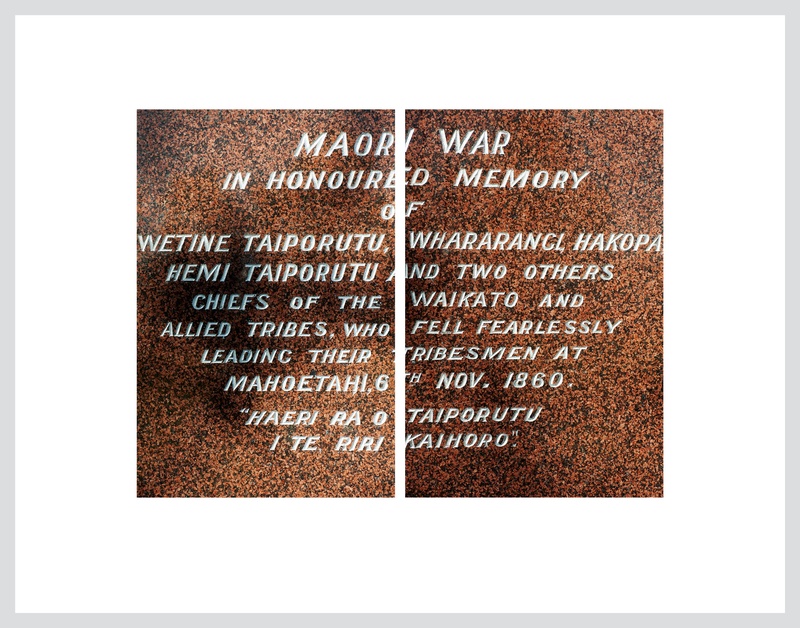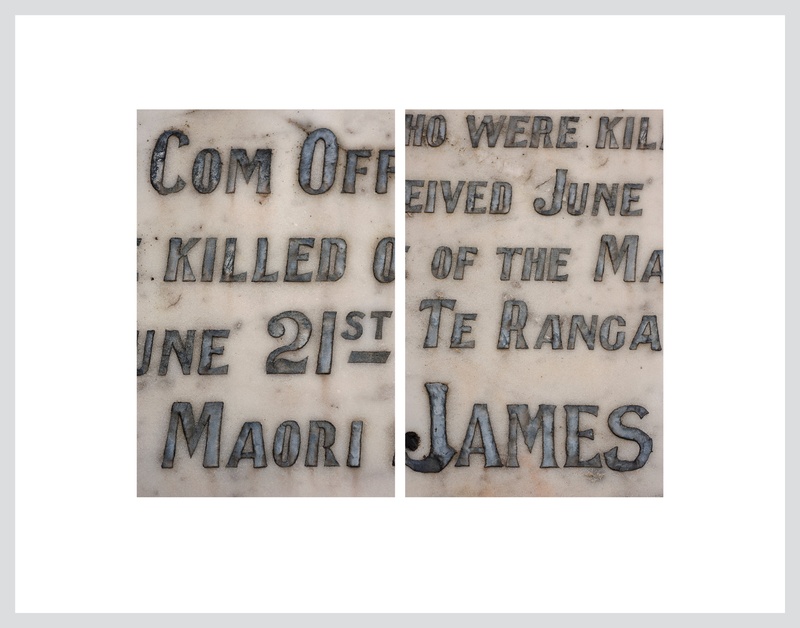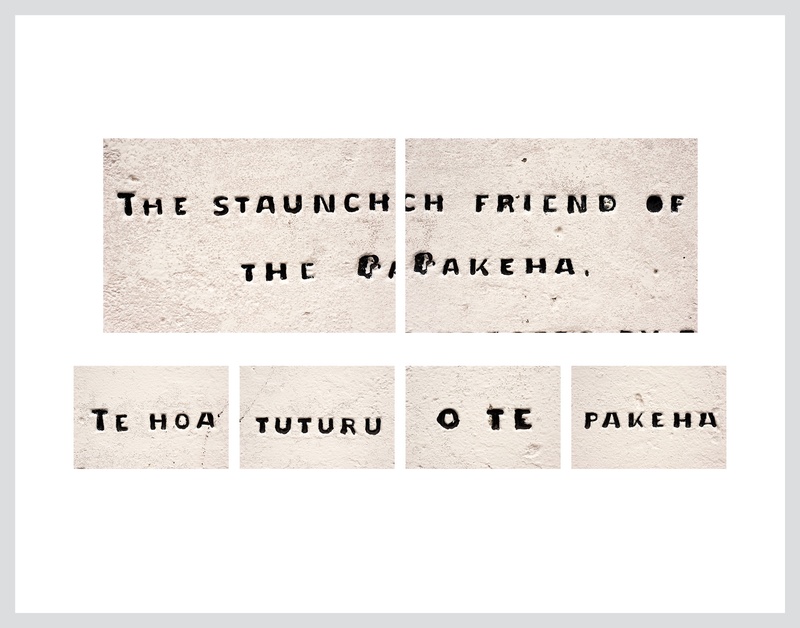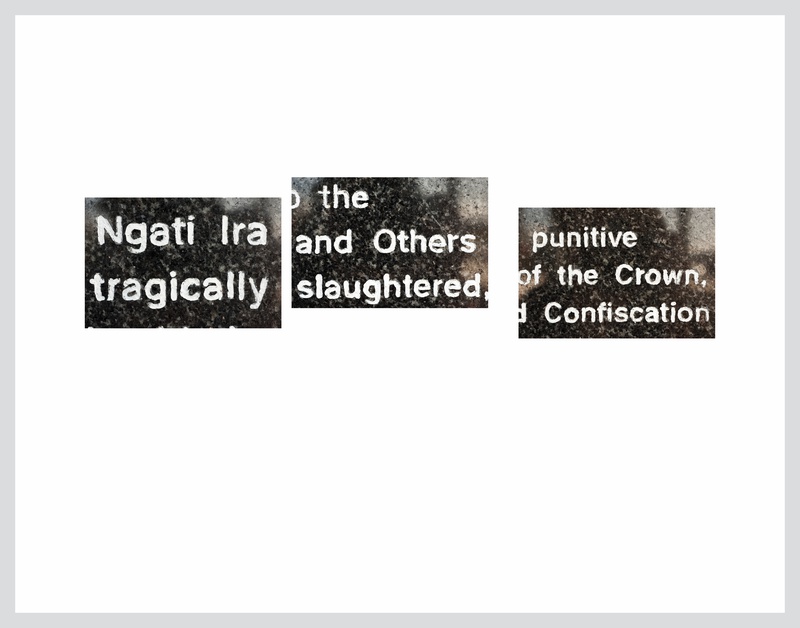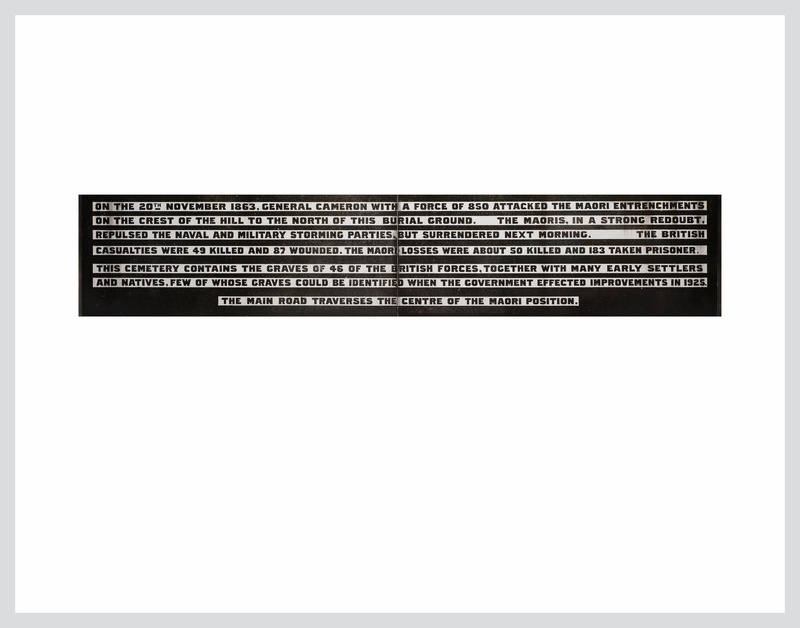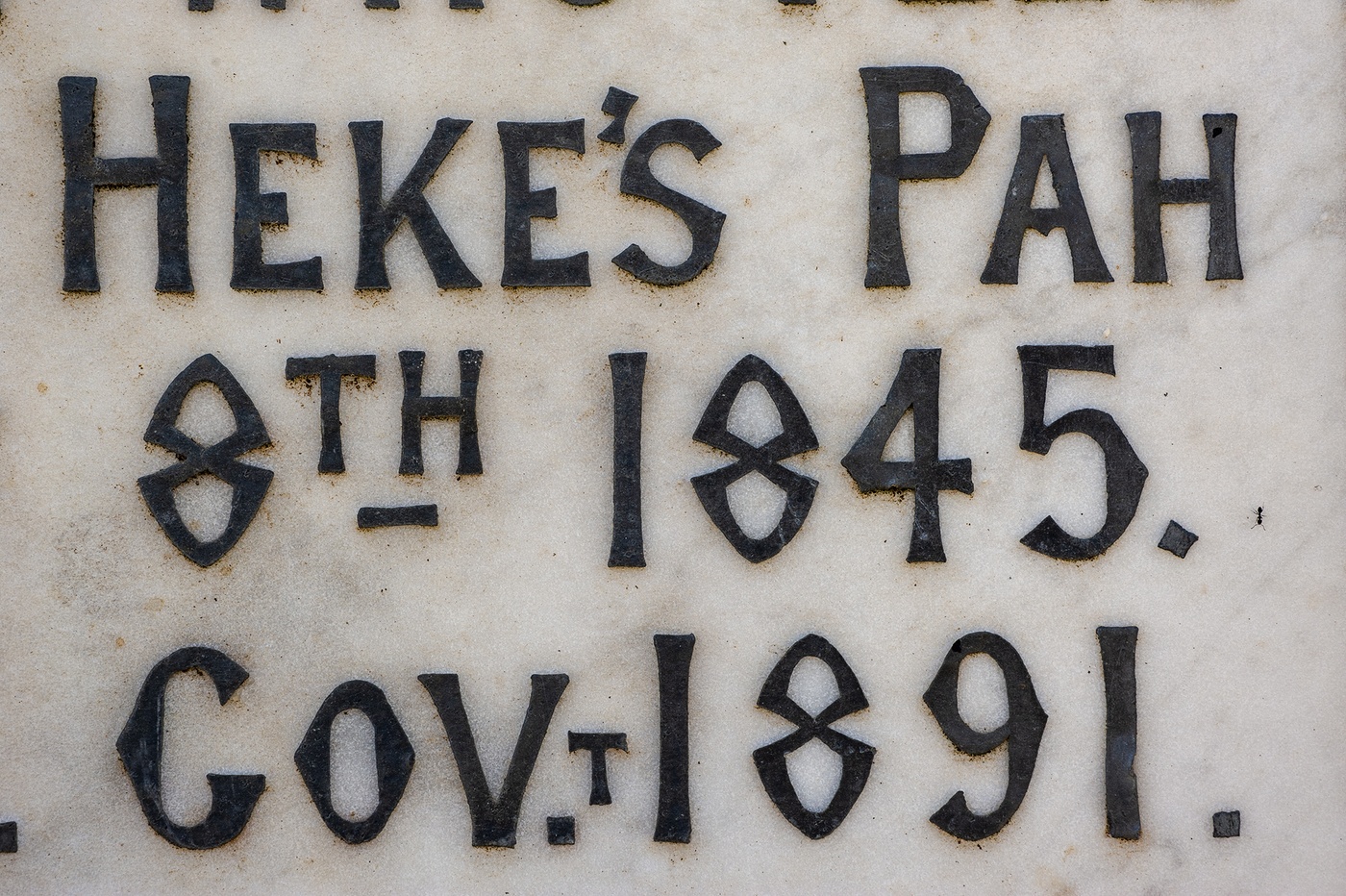‘A Vocabulary’
“The captain says, ‘hoist the flag here’, and the Union Jack flew. Wednesday, 31 January 1770, in the presence of the chief — the height of summer, ‘light winds and variable’ on Motuara, this little island, a gesture to Tōtaranui Queen Charlotte Sound, Aotearoa New Zealand — Captain Cook took ‘possession’ of the ‘mainland’ for King George III.”

book
‘A Vocabulary’, Bruce Connew, is a 604-page, cloth, case-bound artist book in an edition of 325 (Vapour Momenta Books, 2021): 306 image works, an introduction, ‘A vocabulary of colonisation’, with He Mōteatea The Lament, and essay The Sandfly Nips...The Conversation Continues by Rangihīroa Panoho.
“I step mindfully onto the farmland to photograph a panorama of the battle site from both Māori and Pākehā points of view. After several footsteps, and with some bafflement, I stop dead in my tracks at a strange sensation deep inside my belly, which today I’m still unable clearly to throw light on. History was here, I grasp that, but this was out of that range. Does earth hold memory, and deliver that memory when the gravity is ripe? I quietly push forward. It was not the only occasion this phenomenon manifested while roaming the battles of Aotearoa’s reprehensible colonial wars. The memory of that memory has not grown pale.
Over several recent years, not the least abstractedly, I’ve roamed more, this time after the many memorials and gravestones for the dead of these wars, or more specifically, the texts on these testaments to folly. A vocabulary of colonisation.” Bruce Connew
Design Catherine Griffiths
and Bruce Connew
Typography Catherine Griffiths
Cloth, case-bound, 604 pages
section sewn, round spine, ribbon
206 x 137mm, upright
496 colour photographs as 306
image works
Printed and bound in Aotearoa New Zealand by Kale Print and Bookbinding Press
EDITION of 325 including SPECIAL EDITION of up to 50 copies with ‘Heke’s Pah’ signed, pigment print, 158 x 105mm image size, on 308gsm Hahnemuhle Photo Rag
Vapour Momenta Books
ISBN 978-0-473-54543-7
out of print
exhibition & prints
‘A Vocabulary’, Bruce Connew, was first exhibited at Te Uru Waitākere Contemporary Gallery, Titirangi, Tāmaki Makaurau Auckland, 5 December 2020 – 14 February 2021.
The exhibition comprises the artist book [the shelf], 79 framed works (a selection of images with reference to the artist book of 306 image works) and introduction, ‘A vocabulary of colonisation’ [the walls], with He Mihi and extracts from He Mōteatea The Lament and essay by Rangihīroa Panoho [the plinth]. Curated and designed by Catherine Griffiths and Bruce Connew.
Opening preview was 16.00 – 18.00h, Saturday, 12 December 2020.
The artist book is now out of print, although a complete .pdf without the heft and materiality of the real thing is available at: https://bruceconnew.com/books/
exhibition tour
Te Uru Waitākere Contemporary Gallery, Tāmaki Makaurau Auckland,
5 December 2020 — 14 February 2021
Toi Tauranga Tauranga Art Gallery, Tauranga, 23 October 2021 — 23 January 2022
Te Kōngahu Museum of Waitangi, Waitangi Treaty Grounds, 19 February — 22 May 2022
MTG Hawke’s Bay Tai Ahuriri, Ahuriri Napier, 10 December 2022 — 19 March 2023
National Army Museum Te Mata Toa, Waiouru, 6 April 2023 — 28 August 2023
Toi Mahara, Waikanae, 5 April 2025 — 6 July 2025
National Library, Te Whanganui-a-Tara Wellington 16 August — 15 November 2025
related writings
- National Library opening talk, 15 August 2025 (briefs)
- “semiotics of colonisation” (podcasts)
- Recreational vehicles of migratory shorebird watchers (briefs)
- Fragments d’une colonisation (briefs)
- Te Rauparaha (briefs)
- Cook’s Visits (briefs)
- John Bryce (briefs)
- ‘Cross written’ letter (briefs)
- ‘A Vocabulary’ review, Ewan Morris (reviews)
- First Taranaki War (briefs)
- A Vocabulary ... a heinous episode (briefs)
- A Vocabulary ... memory (briefs)
- ‘A Vocabulary’ review, John Hurrell (reviews)
- A Vocabulary ... kōrero (briefs)
- ... Waitangi (briefs)
- A Vocabulary ... the stack (briefs)
- ‘A Vocabulary’ review, Paul Diamond (reviews)
- A Vocabulary ... at the gallery (briefs)
- A Vocabulary ... book at the binders (briefs)
- Oblong as an Egg, Flat as a Stone, Deep as a Jungle, Art New Zealand #171, Spring 2019 (publications)
- Kim Hill, Radio New Zealand, 19 December 2020 (podcasts)
view all 0 works with print/price particulars
A vocabulary of colonisation
The captain says, ‘hoist the flag here’, and the Union Jack flew. Wednesday, 31 January 1770, in the presence of the chief — the height of summer, ‘light winds and variable’ on Motuara, this little island, a gesture to Tōtaranui Queen Charlotte Sound, Aotearoa New Zealand — Captain Cook took ‘possession’ of the ‘mainland’ for King George III.
Two hundred and twenty years subsequent, a military historian emphatically paces out the parameters of Riwha Tītokowaru’s battle pā at Motūroa a few kilometres in from Waverley. Over one hundred and fifty years ago — 7 November 1868 — a clutch of Colonel George Whitmore’s Armed Constabulary and other colonial forces, with ‘kāwanatanga’ Whanganui Māori, met their end in this very field.
I step mindfully onto the farmland to photograph a panorama of the battle site from both Māori and Pākehā points of view. After several footsteps, and with some bafflement, I stop dead in my tracks at a strange sensation deep inside my belly, which today I’m still unable clearly to throw light on. History was here, I grasp that, but this was out of that range. Does earth hold memory, and deliver that memory when the gravity is ripe? I quietly push forward. It was not the only occasion this phenomenon manifested while roaming the battles of Aotearoa’s reprehensible colonial wars. The memory of that memory has not grown pale.
Over several recent years, not the least abstractedly, I’ve roamed more, this time after the many memorials and gravestones for the dead of these wars, or more specifically, the texts on these testaments to folly. A vocabulary of colonisation.
British soldiers typically, colonial too, settlers, and some Māori who, for one reason or another, and at different moments, aligned — and sometimes disconnected — with the overwhelming military force. And interlaced with these dead are those who, replete with political and procedural power, enabled eager fighters in a contemptuous plunder of land and vital spirit. These remnants are scattered across mostly Te Ika-a-Māui North Island, residual memory, misremembered, not remembered. And there are those who know the Imperial story only too well.
On a long drive home one evening, up against the one-sided face of these primarily victors’ memorials, I turned them around in my mind, 180 degrees, and glimpsed a potent portrait of resistance to dispossession. Rare are the memorials to that Māori resistance. More lately, at some sites of battle, pou whakamaumahara evidence this Māori narrative.
A brutal dispossession came, no matter a treaty, the consequences of which abide.
BRUCE CONNEW / 12.2020
view all 0 works with print/price particulars
